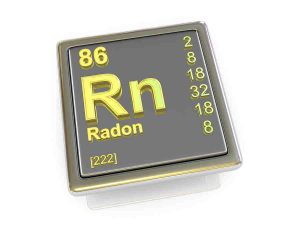How Does Radon Enter The Home?
 Radon is sometimes referred to as a “silent killer.” You can’t see it, you can’t smell it, and you can’t taste it, but if you’re exposed to it you might be dealing with rather severe health problems.
Radon is sometimes referred to as a “silent killer.” You can’t see it, you can’t smell it, and you can’t taste it, but if you’re exposed to it you might be dealing with rather severe health problems.
Radon is a naturally occurring gas, so small amounts of radon exposure happen. It comes from the breakdown of radium and surprisingly doesn’t last for very long in the air, but unfortunately it can accumulate. You might find a higher concentration in springs or water sources that come from the ground and also in buildings with low areas, such as basements or crawl spaces.
Why Worry About Radon?
Radon has been definitively linked to incidences of lung cancer, contaminating indoor air quality worldwide. The United States Environmental Protection Agency regards radon as the second most frequent cause of lung cancer after cigarette smoking. If you’ve ever wondered how people who don’t smoke get lung cancer, there’s a good chance that radon is to blame.
How Radon Enters The Home
Clearly you don’t want radon getting into your home and affecting the health of you or your children. But before you can prevent it from coming in, you must understand how it even gets there in the first place.
Radon seeps into buildings through the ground, rising up through the crawl spaces or basements and then accumulating. Basically any space that acts as the path of least resistance will be ideal for this gas as it escapes the ground. Radon might enter your home through:
- Cracks in foundation walls and floors
- Gaps in the flooring
- Spaces around pipes entering the foundation
- Fireplaces and furnaces
- Open areas inside the walls
- Exterior air vents
- Water that comes from a well source
- Construction joints where concrete stops and starts again
Test And Lower Radon
Testing for radon is as simple as grabbing a kit from the store. Because radon is undetectable in basically any other way, this is the only way to find out what the radon levels in your home are like.
If you discover your home has higher-than-average radon levels, it’s time to take action. First, aim for the source of the problem by hiring a contractor to seal up holes in the foundation. Without these cracks, the radon will seep out of the ground elsewhere and not get trapped in your home, making it safer for you and your family. You can also consider a temporary fix of installing a venting system to vent air from the basement outside—but this will not guarantee to lower the levels of radon in your home.
Holes and cracks in your foundation can increase amounts of radon in your home and lead to structural issues, water damage, and more. Give AA Action Waterproofing a call today to help make your home a safer place for you and your family. 888-922-5517
